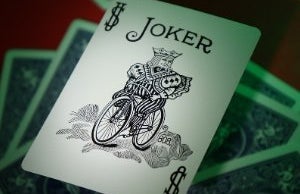Joker, Mental Health, Psychology, Ashoka University
Edited by Mohan Rajagopal
The word most commonly associated with the comic character Joker is madness. Despite being a man who gains pleasure from tricking people, the Joker has been one character with whom the audience sympathises. The latest movie starring Joaquin Phoenix as Joker, uses his mental illnesses to invoke pity from the audience. Joker writes in his diary, “the worst part about having a mental illness is that people expect you to behave as though you don’t.” It is hard to not sympathise with this. The film uses his mental illnesses to explain his madness, making him seem more human than a supervillain. The portrayal of the personality disorders that he suffers from is accurate and makes him human. However, they cannot be considered the cause of his violent behaviour.
Arthur Fleck, who later becomes the Joker, is a lonely party clown who wishes to become a stand-up comedian in Gotham city. He suffers from a medical condition called Pseudobulbar affect which makes him laugh uncontrollably in inappropriate social situations. He is an awkward man; he does not know how to communicate with people, stares at them, cannot decode normal social cues, and makes odd expressions that make people uncomfortable. For example, he kisses a guest speaker on the Murray show. Her discomfort is apparent. Moreover, his laughter makes a woman on the bus feel irritated and almost disgusted even after he shows her a card that explains his neurological condition, portraying the apathy that exists for people with mental conditions.
Arthur is doubly ‘troubled’. Not only does he suffer from Pseudobulbar affect but also from two personality disorders, making him seem insane to the common eye. He is narcissistic, evident from the way he craves attention . He is also psychopathic in that he does not have any empathy for anyone. Though it is not a disorder, psychopathy is considered a personality trait. Its closest counterpart is antisocial personality disorder of which Arthur displays hints.
Arthur does not conform to legally and culturally acceptable behaviour. He comes across as eccentric and terrifying as a result. He kills his mother after he discovers that she abused him as a child and had been lying to him about his past. He repeatedly engages in behaviour that is illegal and unethical without paying heed to the consequences. He kills his coworker Randall in cold blood in front of his other coworker Gary. He does not feel remorse for any of his victims, be it Gary or Randall. Even though he lets Gary go without physically harming him, the psychological aggression he inflicts, even on the people who are good to him, shows how his capacity for remorse continues to decline as the film progresses. His violence is impulsive. He shoots the television host Murray Franklin. He is irritable and aggressive throughout the film This is why he continuously gets involved in physical fights. He disregards the safety of himself and others. Even though he does not mean to harm the sick children he entertains as a clown in the hospital ward, he uses a gun as a prop in front of them. This indicates his inability to grasp the concept of safety. All of these instances are an accurate representation of antisocial personality disorder.
The depiction of Narcissistic Personality Disorder is poignant. It pays heed to all aspects of the condition. Arthur is preoccupied with fantasies of unlimited success and ideal love. All his life, he has wanted to become a famous stand-up comedian. He imagines himself on television and seeks public attention. He is obsessed with his neighbour Sophie and fantasises about dates with her. He needs excessive admiration to function. Validation from others feeds his self-esteem. When he imagines himself on the show, he expresses his desire for paternal affection. He wants to be told, “I wish I had a son like you.” He feels entitled to favourable treatment from others. He expects his audience to laugh at his attempts at comedy and gets agitated when this does not happen. He confesses to murdering the three men on the subway and affirms that killing them was funny. Since Murray does not indulge Arthur’s dark humour, he is killed on his own show.
Though accurate in its portrayal of personality disorders, the film must be watched with caution. It perpetuates the idea that mental illnesses cause violent behaviour. When Arthur stops taking his medication he is depicted as more violent. However, making a causal link between violence and mental disorders is inaccurate. Moreover, it cannot be concluded that all his murders were the consequence of his illnesses. Instead, they were a result of an interaction between his mental state and environment. Income inequality, society’s apathy towards those with mental conditions, and social isolation are important factors that make him more prone to violent behaviour. Finally, the conflation of his neurological condition with his psychological disorders is confusing for the audience. He comes across as an insane clown who cannot control his laughter, reinforcing the stereotype that those with mental disorders are mad. Thus, the depiction of personality disorders is accurate but the overarching theme of violence and mental illnesses should be considered with care.


